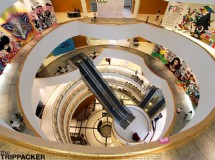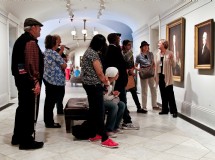- The stereotype of ancient medical practices usually features barbaric amputations, poisons given as medications and very high mortality rates. Ancient physicians are often thought to have been uneducated, ignorant men who had no true understanding of the human body. But in many ancient civilizations, such as Greece and Rome, this was not the case. Building on principles they learned from the Greeks, Roman physicians developed a detailed understanding of the body and understood the importance of hygiene and sanitation, which were the impetus behind the building of Rome's famous aqueduct and sewage systems. After the collapse of the two ancient empires and the loss of much of their collective knowledge for centuries, barbaric practices and high mortality rates became the norm. But in their day, ancient Roman physicians had many sophisticated diagnostic and surgical tools.
- Many instruments used by the ancient Romans are almost identical to those still used in modern medicine, or they remained virtually unchanged right into the 20th century. The main difference between the ancient and modern tools is the materials used to manufacture them. Ancient physicians used copper, while modern medical equipment is generally made of surgical steel. After the collapse of the Roman empire, when much of their medical knowledge was lost and medical practices regressed to the level of barbarism and guess-work, it took many centuries to rediscover this lost knowledge and there were few medical advances. Among the writings from the ancient period that survived is the "Hippocratic Corpus," a collection of 60 medical texts dating between 360 B.C. and 200 A.D. This work details the uses of many implements, gives examples of case studies and techniques, and discusses ailments, injuries and their approved treatments. Although attributed to Hippocrates, these writings were created by several different ancient physicians and introduced such professional standards as patient confidentiality and the Hippocratic Oath, which is still used by the medical profession today.
- Roman vaginal and rectal speculums were generally made of copper, and were used to dilate the vagina and rectum for internal examinations. The vaginal speculum is one of the rarest surviving Roman medical instruments, and was comprised of two or three moving arms, which opened and closed with a screw mechanism on the handle. They were used in the diagnosis of gynecological and obstetric conditions. Virtually the same instrument was still being used widely in medicine in 18th century Europe. Roman rectal speculums are very similar in appearance to the modern vaginal speculum, and were used to examine and diagnose rectal and bowel disorders.
- According to the Roman physician Galen, these instruments served two purposes: they were used for levering fractured and broken bones into the correct position and for the removal of teeth.
- Plumbea fistula were bronze or copper conical tubes commonly inserted after an operation of the nose, rectum or vagina to prevent adhesion of the surgical wound and contraction of the site of the operation. They also were used to deliver medications.
- Bone drills were used in the removal of weapons embedded in bone, or to remove areas of diseased bone. Bone drills often had a screw-handle mechanism to rotate the drill head, and were commonly used in conjunction with bone forceps, which were used to remove bone fragments that were too small, or in an area too delicate, for the use of fingers.
- Roman catheters were hollow tubes, usually made from copper, that were inserted into a blocked urinary tract to allow urine to flow from the body. Catheters for male use were curved in an S-shape. Female catheters had a single slight curve. Bladder sounds were a solid tube inserted into the bladder to diagnose potential calcification.
Advances
Specula
Bone Levers
Plumbea Fistula
Bone Drills and Bone Forceps
Catheters and Bladder Sounds
SHARE







































